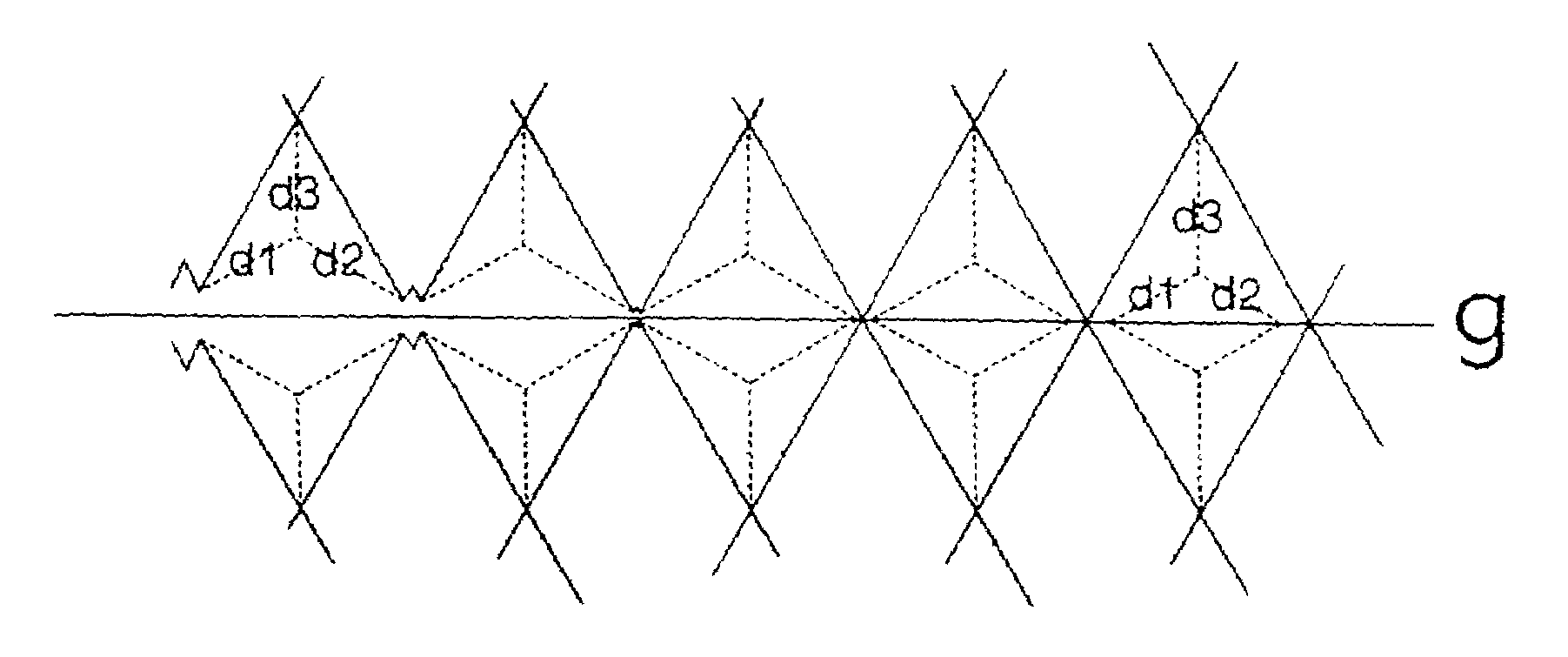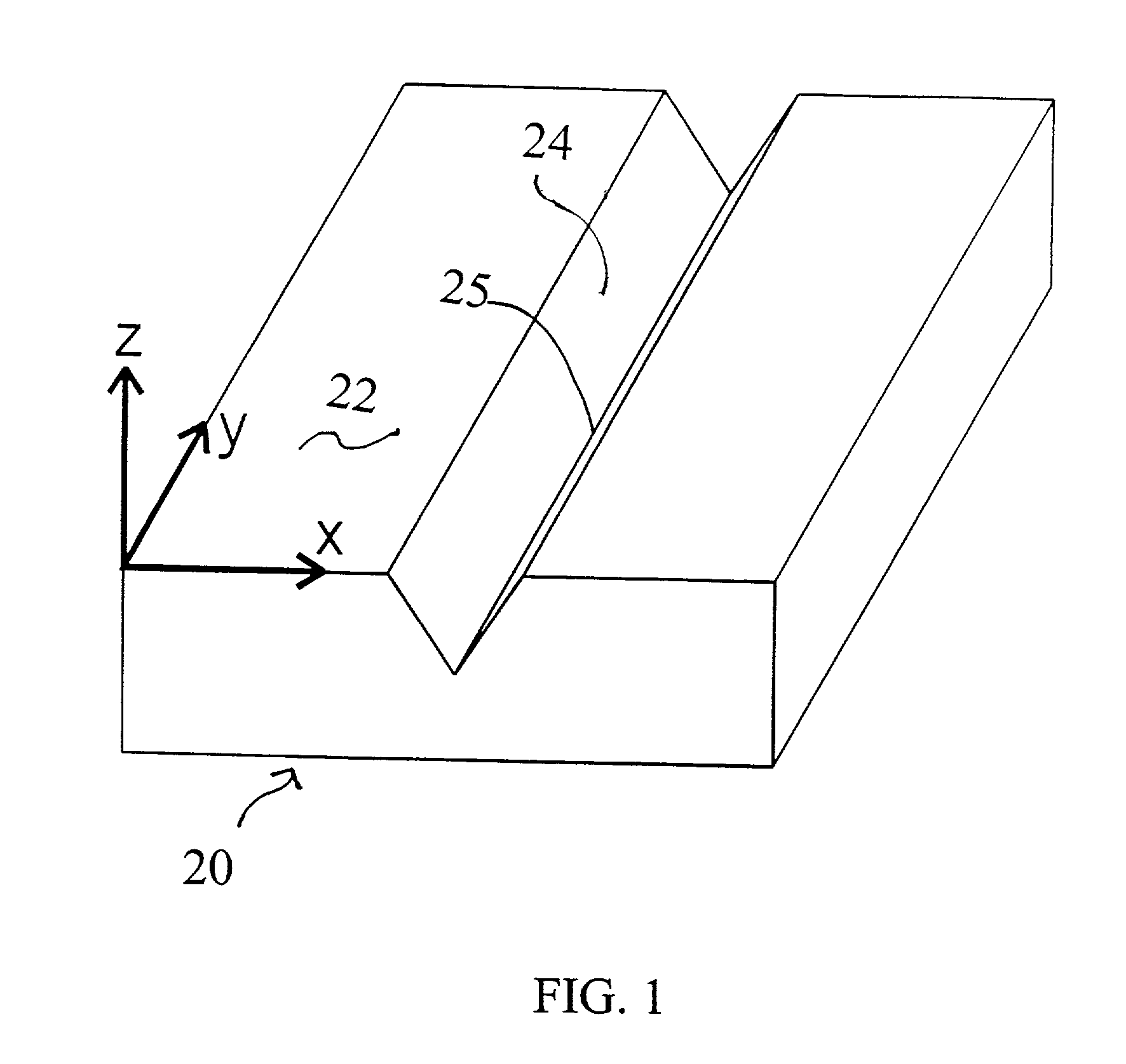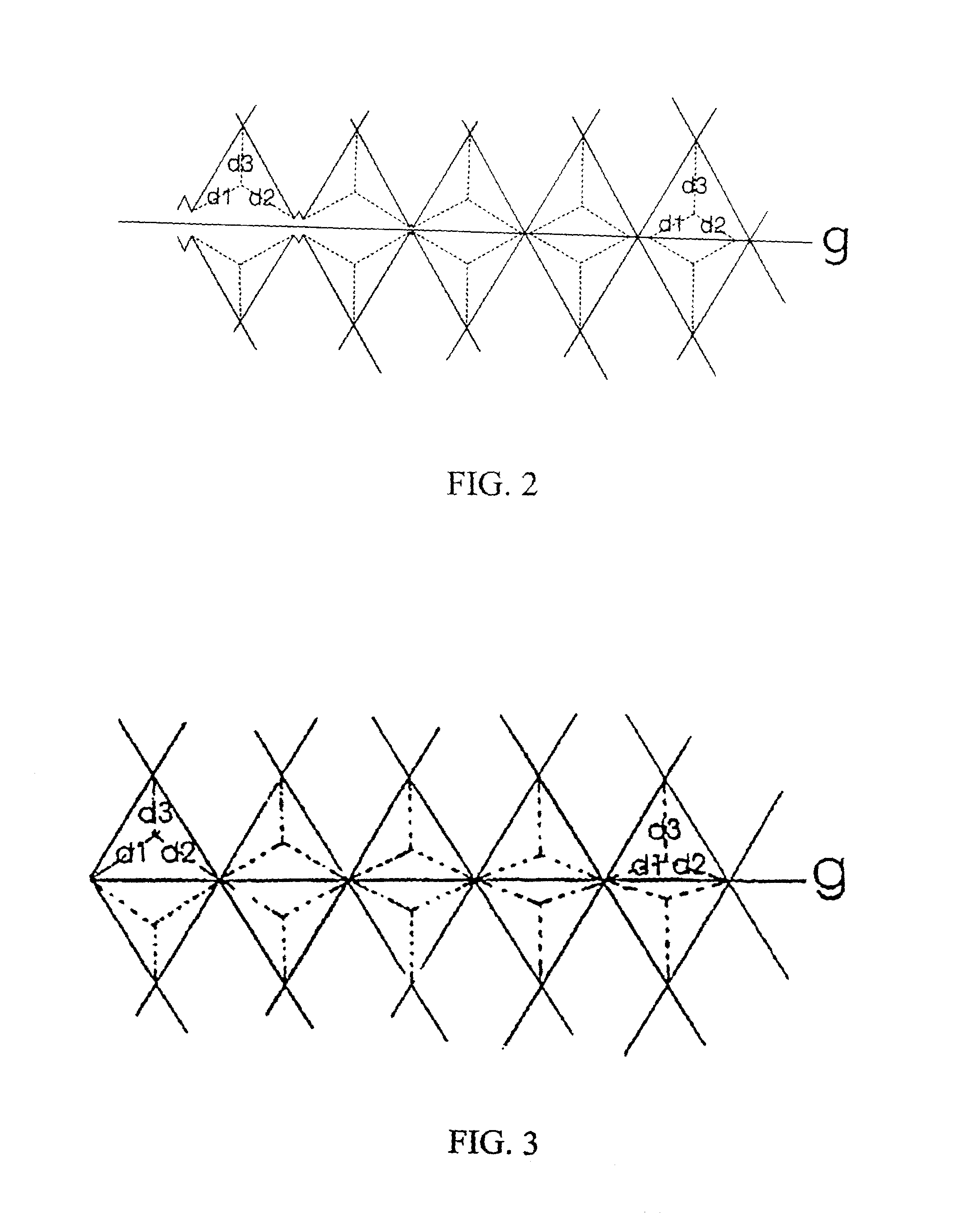Retroreflector with controlled divergence made by the method of groove undulation
a technology of undulation and retroreflection, which is applied in the field of making retroreflection articles with controlled divergence, and articles, can solve the problems of not being able to enhance retroreflection by enhancing the method, and the retroreflection over a wider range of both divergen
- Summary
- Abstract
- Description
- Claims
- Application Information
AI Technical Summary
Benefits of technology
Problems solved by technology
Method used
Image
Examples
example 1
Prior Art
[0070]The first example is the perfect, unaberrated cube corner with retroreflected light pattern shown in FIG. 4A. The geometric light pattern must have zero divergence, but the cube size introduces noticeable diffraction, as summarized in Table 1. The observation angle aspect of the diffraction light pattern is also shown in FIG. 9 as the curve labelled “aberrationless”. The curve in FIG. 9 is derived from FIG. 4A.
[0071]The geometrical light pattern from a single cube corner consists of six punctal spots, as explained in the cited work of P. R. Yoder, Jr. An unaberrated cube corner produces its six spots in coincidence. In the following Examples 2–6 different techniques are used to aberrate cube corners. For purposes of comparison, the aberrations in each of these examples are chosen so that the geometrical light pattern in each case has average divergence approximately 1.1°, where the divergence is measured from the centroid of all the punctal spots. All illustrations sh...
example 2
Prior Art
[0072]Example 2 represents the simplest way known to the prior art to make an array of aberrated cube corners having average geometric divergence of 1.1°. Each dihedral angle of each cube corner is made 14 minutes greater than the perfect 90°. FIG. 5 shows the resulting diffraction pattern. Most of the energy is near the characteristic six punctal spots as described above, which diffraction joins into a ring. FIG. 9 shows the ring as a hump in the curve labeled 14,14,14, peaking at about 1.1°. The average intensity at 1.1° observation angle is about eight times the intensity at 0° observation angle. A retroreflector of this kind would not have road applications since it only functions well over such a short range of observation angles that, at any distance, the full range of vehicles (from trucks to cars) could not benefit. It could have specialized applications for instrumentation.
[0073]Examples 3–6 illustrate rulings that can be made in accordance with the instant inventi...
example 3
[0075]For Example 3 sinusoidal vertical undulation is assumed according to Mode 1 of this invention. Ruling dimensions are shown in Table 2 under 20[sin]. FIG. 6A shows the resulting calculated diffraction pattern. It has a gentle central peak and is uncluttered with diffraction and aberration artifacts out to about 2° observation angle. This is the beneficial result of the cube corners not being alike as they were in Examples 1 and 2. FIG. 9 shows the observation angularity of Example 3 as curve 20[sin]. Its intensity at 1.1° is only 37% that of prior art Example 2 at 1.1°. However its intensity at 0° is 16 times that of prior art Example 2, and its intensity at 2° is 2.2 times that of prior art Example 2. Unlike Example 2, a retroreflector having the aberrated cube corners of Example 3 is not limited to close applications, but performs well over a broad distance range.
PUM
| Property | Measurement | Unit |
|---|---|---|
| Fraction | aaaaa | aaaaa |
| Length | aaaaa | aaaaa |
| Length | aaaaa | aaaaa |
Abstract
Description
Claims
Application Information
 Login to View More
Login to View More - R&D
- Intellectual Property
- Life Sciences
- Materials
- Tech Scout
- Unparalleled Data Quality
- Higher Quality Content
- 60% Fewer Hallucinations
Browse by: Latest US Patents, China's latest patents, Technical Efficacy Thesaurus, Application Domain, Technology Topic, Popular Technical Reports.
© 2025 PatSnap. All rights reserved.Legal|Privacy policy|Modern Slavery Act Transparency Statement|Sitemap|About US| Contact US: help@patsnap.com



